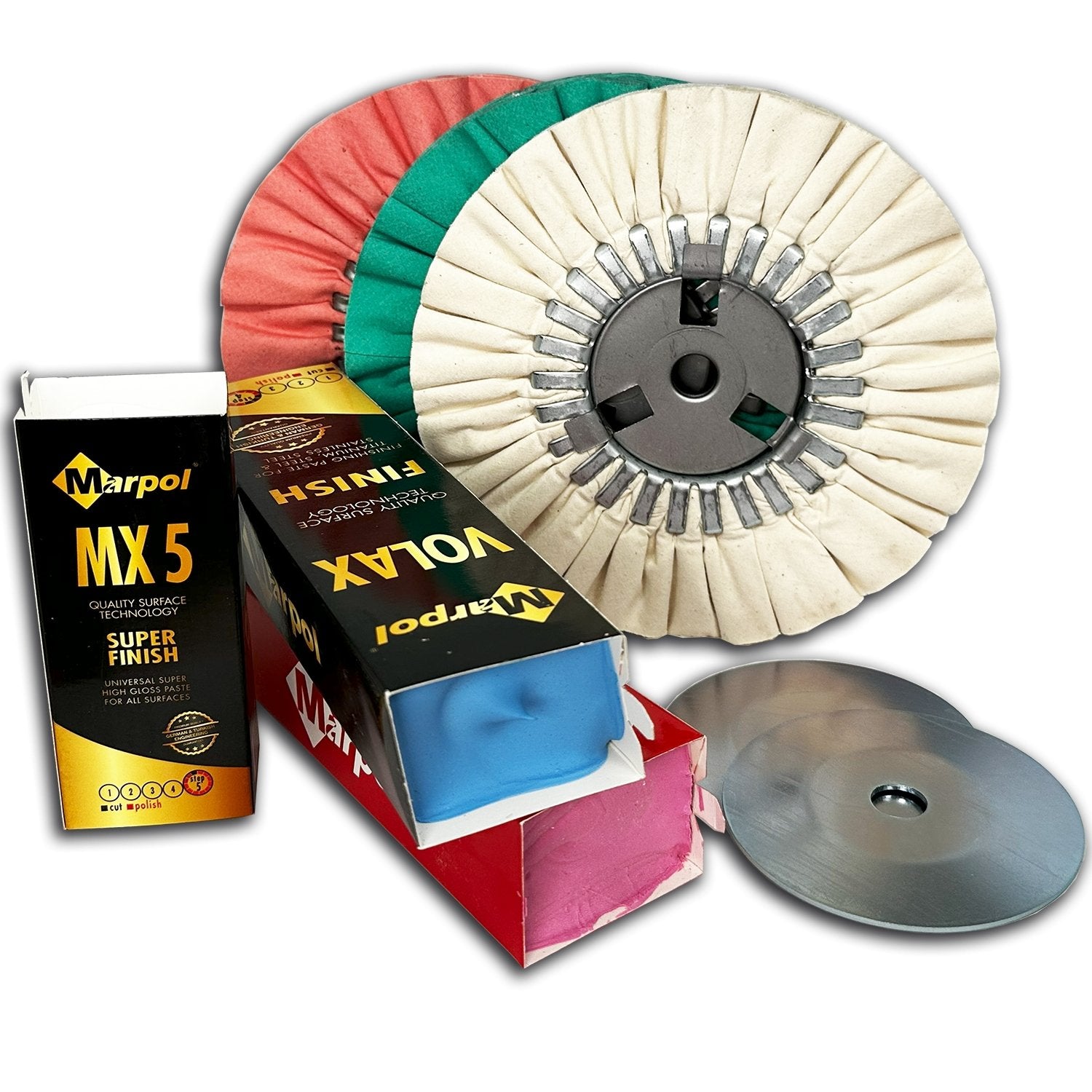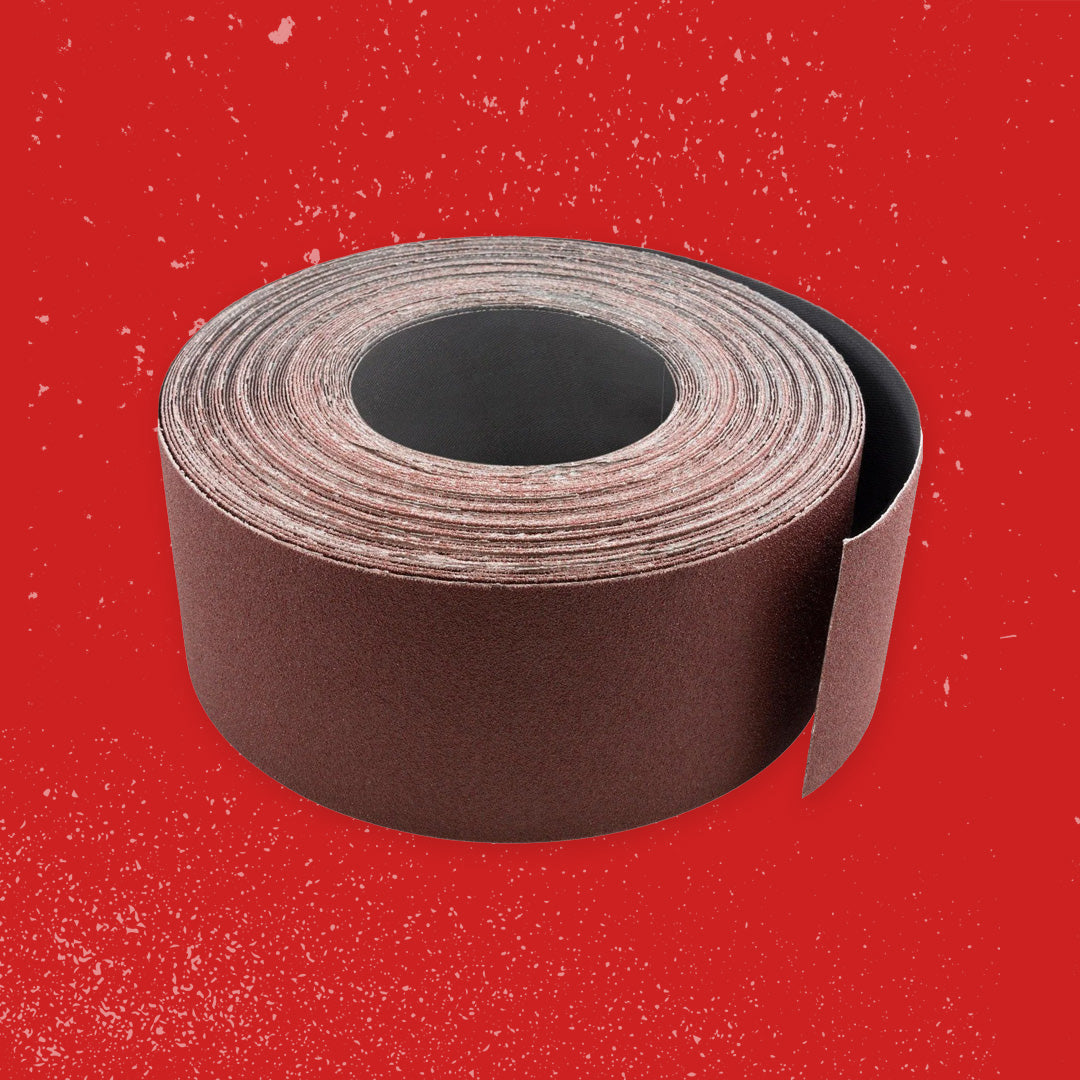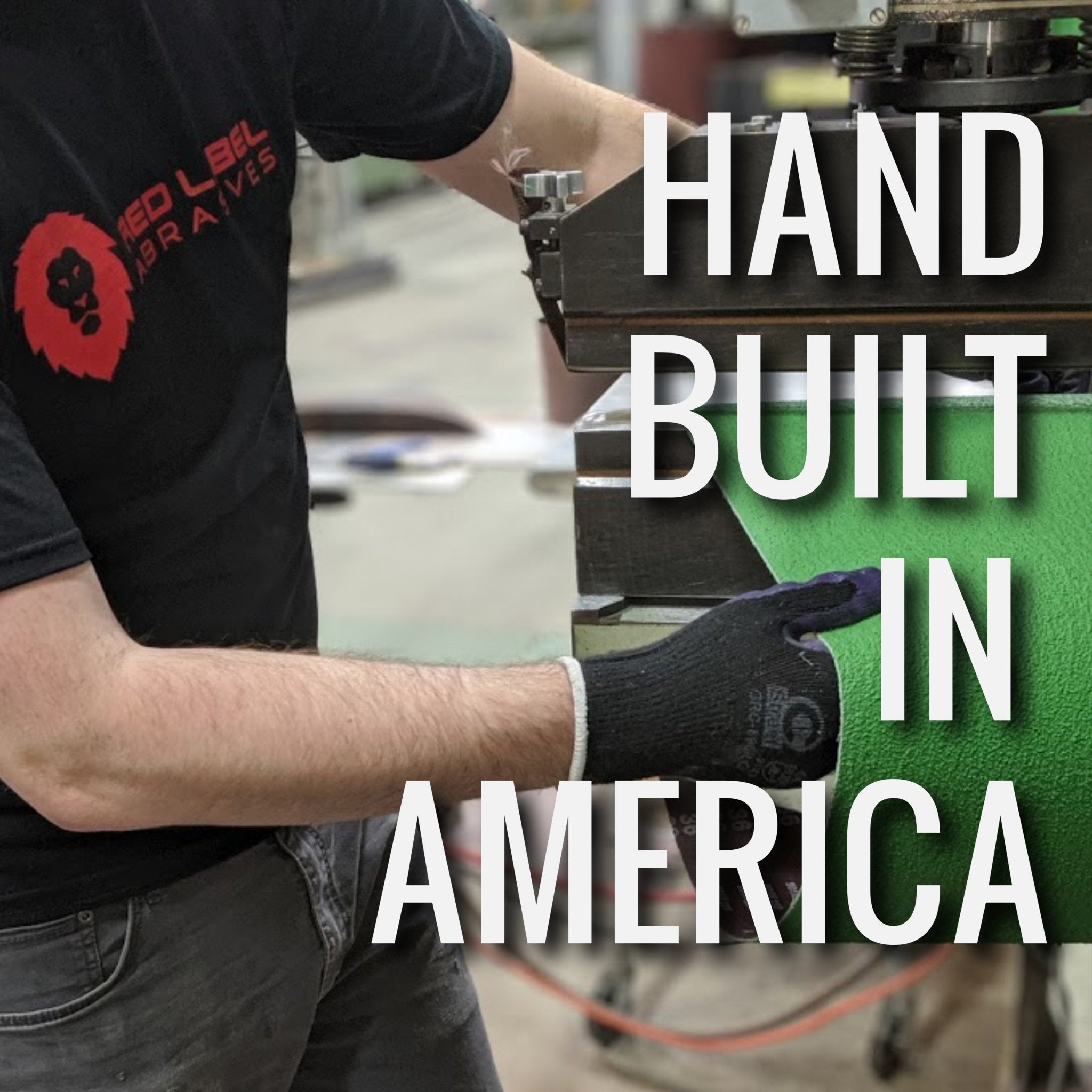Your Cart is Empty
Free Shipping over $150 (Excludes Oversized Products)
Free Shipping over $150 (Excludes Oversized Products)
Sanding Belts
Sanding Discs

Choosing The Best Abrasive Grain Type For Your Application
by David Kranker 4 min read

Sanding plays a critical role in several industries, including but not limited to automotive, metalworking, and furniture manufacturing. Whether you’re looking to remove stock, grind away jagged edges, or apply a satin-smooth finish, you need to choose the best abrasive grain type for your application. In this guide, we’ll review commonly-used abrasives and how to choose the best one for your needs.
What Abrasives Grain Types Are Available?
Below is an overview of the main types of abrasives currently on the market.
Aluminum Oxide
Aluminum oxide is one of the most commonly-used abrasives due to its versatility and affordable price tag. It is highly friable, meaning that it fragments while it cuts, ensuring a consistently sharp cutting surface. However, aluminum oxide also has a lower longevity compared to other abrasive grains, so you’ll need to replace it more often.
Silicon Carbide
Silicon carbide is often used for finish work due to its even and consistent cut rate. It is harder and sharper (and therefore more expensive) than aluminum oxide so you can expect to pay more, but the superior cut rate offsets the higher price.
Ceramic
A premium abrasive, ceramic is hard and delivers a continuously sharp cutting surface. It’s one of the most expensive abrasives on the market but the price is offset by the fact that it has the longest lifespan.
Zirconia
Zirconia cuts aggressively, so it’s an ideal choice for stock removal in hardwoods and metal grinding or polishing. It is less expensive than ceramic and falls in between aluminum oxide and ceramic in terms of longevity.
Grit
Once you select an abrasive, the next step is choosing the right grit.
Abrasive manufacturers identify their products by the coarseness of the grit, which can be anywhere from extra-coarse to super fine. At Red Label, we use theFEPA sizing system, in which the grit number is preceded by the letter.
-
P8 to P80grit range is for heavy-duty sanding jobs, such as stripping caked-on paint or varnish or sanding rough old floors.
-
P100 to P200is recommended for removing planing marks from wood and doing some preliminary sanding or final shaping, especially with wood.
-
P240 and aboveare finer grits that you can use to smooth away residual imperfections and create a fine finish.
Coating Types
Coating refers to how densely the abrasive grain is packed on the backing material. There are three types: closed, open, and semi-open/closed, and each one is designed for a particular purpose.
Closed Coat
With a closed-coat abrasive, the grain is evenly applied, without any open spaces. It is typically used in metalworking applications- for example, closed-coat aluminum oxide is the abrasive of choice for metal grinding, snagging, and weld removal.
Open Coat
Open-coat abrasives have grains on only a portion of the backing, which reduces loading in coarser grits. Coverage is usually between 50 and 70%, allowing material buildup to be eliminated from the grain more easily. You see open-coat aluminum oxide frequently used to plane, strip, and finish wood.
Semi-Open or Semi-Closed
These abrasives have an average 30% grit reduction, creating a middle ground between open and closed coat.
Backing Types
The backing on an abrasive can determine its compatibility with your application.
Paper
Paper-backed abrasives have a lighter weight and lower cost compared to other backing types and ensure more even cutting during delicate steps like smoothing and polishing. It’s not as rugged as synthetic or cloth, although it can be infused with other materials (e.g. latex) for added flexibility. Paper wide belts are especially common in certain woodworking, metal finishing, and plastics applications.
Cloth
Many premium abrasive products have a cloth or synthetic backing due to the strength and flexibility of these materials. Polyester in particular is waterproof, making it viable for wet applications like marine repairs.
Plastic Film
Plastic film backing provides an excellent uniform finish and its combination of strength, flexibility, and water-resistance makes it a common abrasive backing for wet sanding.
Foam and Sponge
If you need to hand-sand veneers and moldings, foam and sponge backings offer the flexibility you need to fit contours and unique shapes.
Best Abrasives for Specific Applications
For you, the best abrasive grain type will depend on what materials you are working with and what results you want to achieve. Below are some popular applications and their common abrasive needs.
The Best Abrasive Grain Type For Woodworking
If you’re a woodworking professional, you’ll find that open-coat aluminum oxide will help you get most jobs done. However, you’ll see the best results if you work with softer woods like pine and cedar. Silicon carbide is great for removing material without excessive heat build-up, so if you need to finish resinous or stabilized wood, it may be your best choice.
With harder woods like hickory or oak, you’re better off using a closed-coat aluminum oxide or a ceramic abrasive. If you opt for the latter, make sure that you don’t accidentally scorch the workpiece, as ceramic cuts aggressively.
The Best Abrasive Grain Type For Metalworking
Closed-coat aluminum oxide and ceramic are the two abrasives most commonly used for metalworking, but zirconia can also be used with great results. For example:
-
For stock removal and weld blending, ceramic and zirconia do the best job on stainless steel and other ferrous metals while aluminum oxide is recommended for alloys, gray iron, and non-ferrous metals.
-
For shaping, ceramic should be used on alloys that are harder to grind while zirconia archives the best outcome for stainless steel and heat-sensitive metals.
Contact an Abrasive Specialist
At Red Label Abrasives, we manufacture premium-quality abrasive products that meet the needs of the most demanding applications, including woodworking, metalworking, and knife making. We even support specialty applications like glass, stone, and wet sanding. For more information about our products, speak to a technician today byfilling out our contact form or calling 844-824-1956.
ABOUT THE AUTHOR
David Kranker is a writer and creative maker who has been covering the abrasive industry on the Red Label Abrasives Blog since 2020. David spends his time continually researching sanding techniques to provide readers with the latest and greatest information. In his free time, David utilizes abrasives for many different home and auto projects at his home in Delton, MI.
Our Most Popular Abrasives

EdgeCore Ceramic Sanding Belts

EdgeCore Ceramic Flap Discs

Buffing Kit
Shop By Product Category





Why Choose Red Label?







